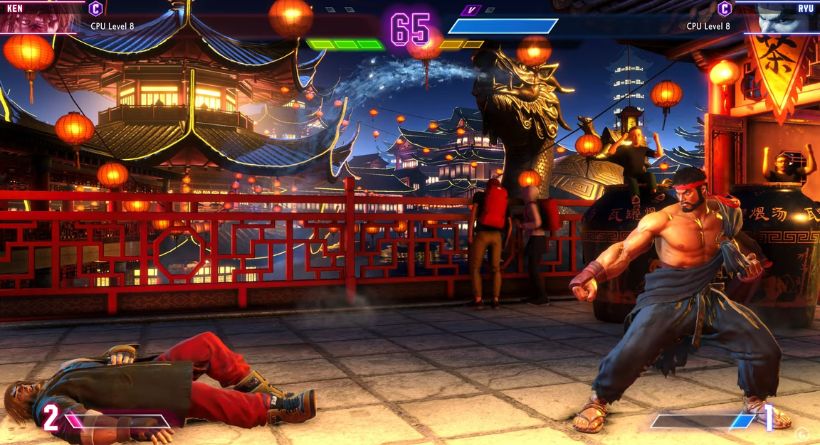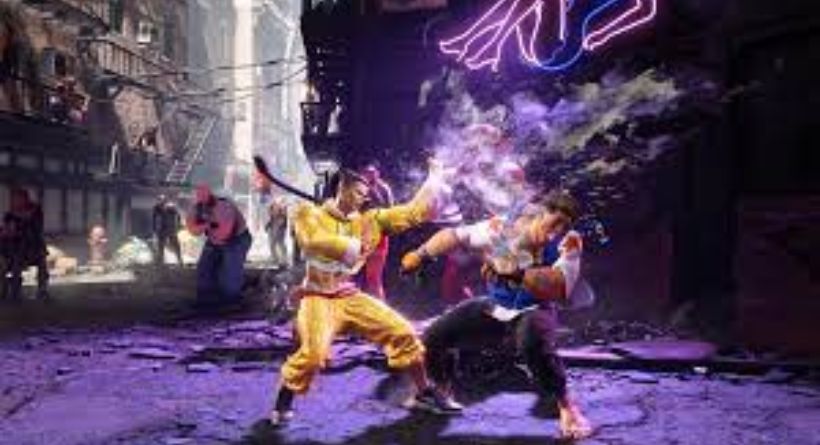One phrase you’ll hear often when discussing fighting games and their online multiplayer features is “Rollback Netcode,” or simply “Rollback.” For instance: “Since they included Rollback Netcode with the most recent patch, playing Street Fighter 6 with my cousin in the Arctic Circle is much better!” But what is it exactly?
We felt it would be worthwhile to discuss rollback features and why they’re so exciting because they were introduced for several games at the 2022 Evolution Championship Series (Evo 2022) fighting game event.
What is Rollback Netcode?
Even when players from different parts of the globe are fighting against one another, rollback is a form of communication method utilized for online play that successfully lowers the perceived latency in the game.
Naturally, latency is crucial in games like competitive fighting games that need rapid reactions.
How does Rollback netcode work?
Rollback anticipates what each player will do next, such as the direction they will input or which buttons they will push.
The game will essentially anticipate every scenario that may happen and provide the most probable result. When the real inputs come in, if anything changes, it will quickly adapt and “roll back” to the original state.
It feels like magic when you use it, and it sounds like magic.
Why is Rollback Netcode better?
Playing online is also possible using a delay-based net code. Essentially, delay-based net code ensures that both players are perfectly synced. This doesn’t always work out, particularly when two individuals are on opposite sides of the globe due to the inherent difficulties of the internet.
Delay-based net code will momentarily halt the action while waiting for the information between two players to match up to keep the game in sync in the case of any network issues.
Depending on the quality of each player’s internet connection, the outcome might be terrible. Poor latency between your controller and the game’s action freezes and stutters, and entirely missed inputs may all be the consequence.
Again, Rollback offers the finest experience since latency is so crucial in competitive games, like fighting games.
Rollback netcode smooths online gameplay
Rollbacknet code is a method for overcoming the difficulties of online gaming where the reaction to button inputs has to be as rapid as possible and latency may damage the experience, as developer Code Mystics demonstrated in a YouTube video. The effects of lag must be reduced as much as possible in games like shooters and fighters since a delay in your character’s response to input or in your ability to observe your opponent’s input might result in your defeat. Developers may use rollback net code to make things more comfortable while still acknowledging that delays can occur while playing with individuals thousands or even hundreds of kilometers distant.
Instead of adding a delay between your button inputs and what appears on the screen so that your actions and those of your opponent happen simultaneously, rollback netcode allows your game to react to your button presses instantly. While it may take a few nanoseconds for the signal to reach your opponent, there won’t be any latency while seeing what your character is doing. To keep things moving forward, the game will attempt to predict what your opponent is doing and show it to you. The game will instantly update the action on the screen, presenting your opponent’s actions and swiftly relocating them to the new, accurate place when the program guesses incorrectly and their inputs reach you.
This lets players see the outcomes of their button pushes as rapidly as possible, allowing for more accurate gaming. However, it may also result in some uncomfortable visuals when your opponent seems suddenly change positions or execute moves at lightning speed.
Possibly the future of online gaming
Online games have advanced significantly thanks to rollback netcode, which some experts believe will eventually completely replace delay-basement-net code his action by “Dragon Ball FighterZ” would appear to confirm their forecasts. This does appear to be the way of the future, with SNK revealing at Evo 2022 that “Samurai Shodown” will also be incorporating rollback netcode with Multiversus including it right off the bat.
Even while the “Smash Bros.” series seems to be a holdout—the developer is still using the outdated delay-based net-net code does seem that more developers are considering rolling back. It’s simple to see why given the fan reaction and gameplay advantages. Thanks to this emerging technology, gamers may anticipate smoother competitions and more balanced gaming in the future, both at home and at competitions.
What is delay-based net code?
The fundamentals of a fighting game are how attacks are calculated, to start. In fighting games, it resembles a unit of time. For instance, a character’s attack could appear in 3 frames whereas a slower character’s attack might appear in 5 frames. The computer conducts the assault when you push a button on your controller because it recognizes it as input. When two players push buttons simultaneously, the game should logically receive and handle both inputs.
As a result, fighting game players often prefer to train on an offline network since this is consistent in offline play. If you consider it rationally, sending information through a network always results in a delay. Fighting games must account for this latency to prevent late inputs from being received by the opponent. (Consider pressing a button and having to wait a moment for your attack to launch, while your opponent manages to do it sooner.)
The prior, prevalent method of reducing this network latency was via the use of a delay-based net code. In essence, the game will intentionally delay the player inputs for both local and distant players. For instance, the game can artificially compel a move that should come out in 5 frames to come out in 8 frames. Both players have the same restriction imposed upon them. This difference will be noticeable to players who are accustomed to playing offline, which is why netplay is often mocked in the gaming community. (This oversimplifies what occurs.)
Theoretically, this wouldn’t be a problem if the internet were a constant battleground with no variations. Delay-based net code sometimes performs well and is maybe even superior to rollback netcode. (This takes into account the separation between the two players.) The internet is not an equal playing field, as we are all aware. Fluctuations occur often.
Imagine there is a spike in your connection and your controller is unable to send data to the network. You hit the A button, but because of a hiccup on your internet, the opponent player does not get it in time. What transpires? Because this is the only method to guarantee that all inputs arrive at the same time, the game slows and freezes.
What is rollback netcode?
Now that we know what rollback netcode is, why have fighting game gamers backed it as the best method for managing online play? Do you recall the uproar the Super Smash Bros. community caused when the creators refused to include rollback?
Rollback netcode essentially gets rid of the delay by anticipating your inputs. By itself, the game will make an effort to forecast your input, and it will display that prediction to the other player. For instance, the game will display the adversary as if you were to unleash Ryu’s Fireball against them. Imagine, however, if you chose a different strategy. The “rollback” feature of the game will change what transpired. A separate stage of the game is reached when your other attack was used.
What are the advantages of rolling back Netcode? This would need a continual rewinding of the game into various states. In actuality, this rewind often occurs in such a little period that it’s difficult to even detect. You wouldn’t notice a difference in gameplay if there was a significant increase in latency and the game properly predicted all of the inputs at the time.
Games often and accurately forecast certain frames in the future. Consider that you are resisting a continuous barrage of hostile pressure. What does the game think will happen to you in the future? Will you attempt to engage the opposition or will you keep blocking? The game will properly estimate that you will most often opt to block.
Rollback netcode can improve everyone’s gaming experience by making it significantly quicker and more fluid when used properly. guilty apparel Tournaments between the United States and Japan have been staged with tremendous success, and Strive has a fantastic online netcode. In a delay-based net code, this would be impossible since the delay would be too great.
What makes rollback netcode so great? And how do these two net code types work? Ars Technica delves much further into these questions. You should read their article if you’re interested. Core-A Gaming, a YouTuber, also provides a useful video about rollback netcode that has graphic illustrations and interviews with game creators. You may see the video below or visit his channel:


